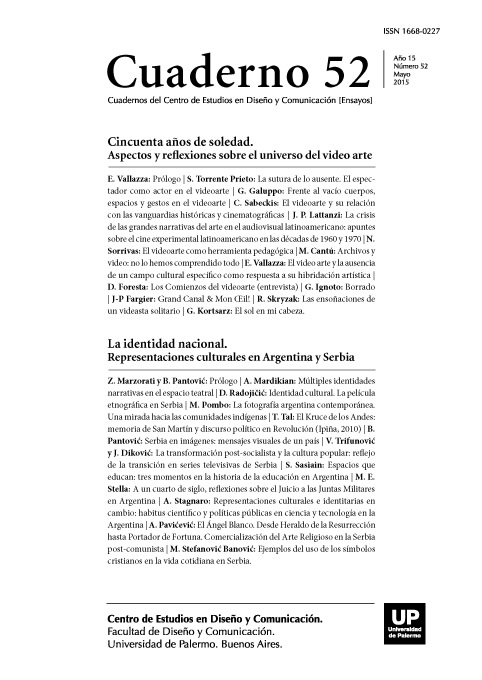El video arte y la ausencia de un campo cultural específico como respuesta a su hibridación artística
Abstract
This article aims to analyze, from a historical point of view, the place that video
art has in the artistic field influenced by the postmodern art and the development of new
technologies. As an artistic practice defined by an artistic hybridization, between painting
and film, the video art does not define a specific cultural field. The aim of this paper is also
inquire about the intimate relationship between the development of new technologies, as
they were portable video cameras released to the market in 1965, and as an artistic practice
of video art that condenses in itself the features of a postmodern discourse that is defined
by the questioning of the art institution and the concept of aura and authorship.
The answer to this crisis setting is the lack of specificity in a cultural field based in specialized critics, academia and the exhibition and distribution channels. While contemporary
art museums, have dedicated many complete programming seasons to video art for several
years, there are still very few media and journalists who specialize in communicating it. This
has some impact on the curricula of visual image specialized careers, as there are few exclusive subjects on such artistic practice.This paper intends to make a brief historical analysis
of the practice of video art to reflect on their place in the contemporary cultural field.
References
Alonso, R. (2005). Cuadernos de Cine Argentino. Cuaderno 3: Innovaciones Estéticas y Narrativas en los Textos Audiovisuales. Buenos Aires: Instituto Nacional de Cine y Artes Audiovisuales.
Bourdieu, P. (2002). Campo Intelectual y proyecto creador. Buenos Aires: Ed. Montressor.
Los autores/as que publiquen en esta revista ceden los derechos de autor y de publicación a "Cuadernos del Centro de Estudios de Diseño y Comunicación", Aceptando el registro de su trabajo bajo una licencia de atribución de Creative Commons, que permite a terceros utilizar lo publicado siempre que de el crédito pertinente a los autores y a esta revista.


